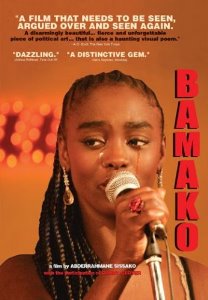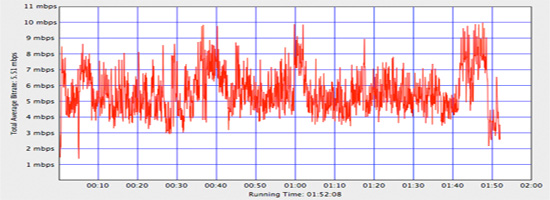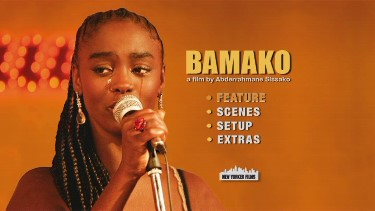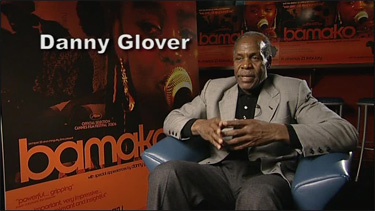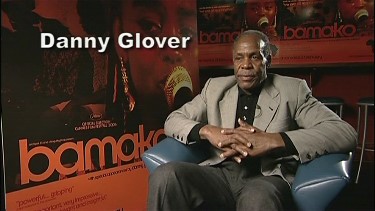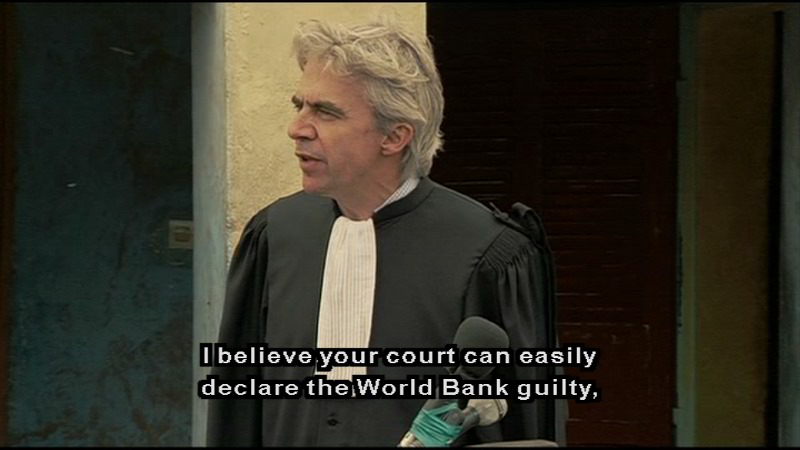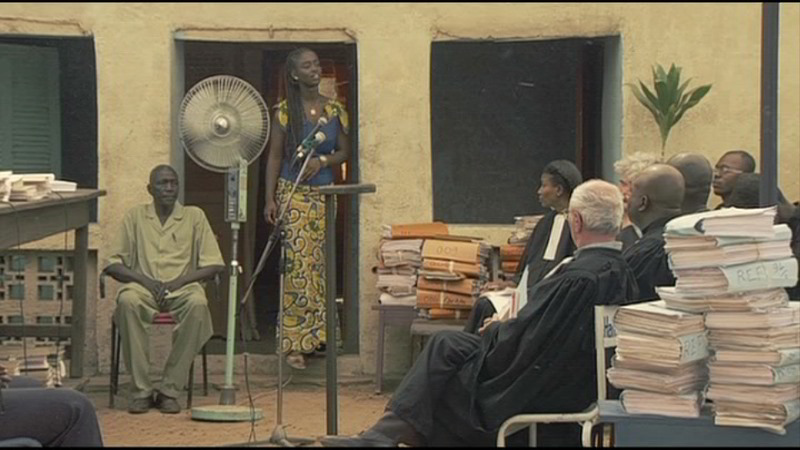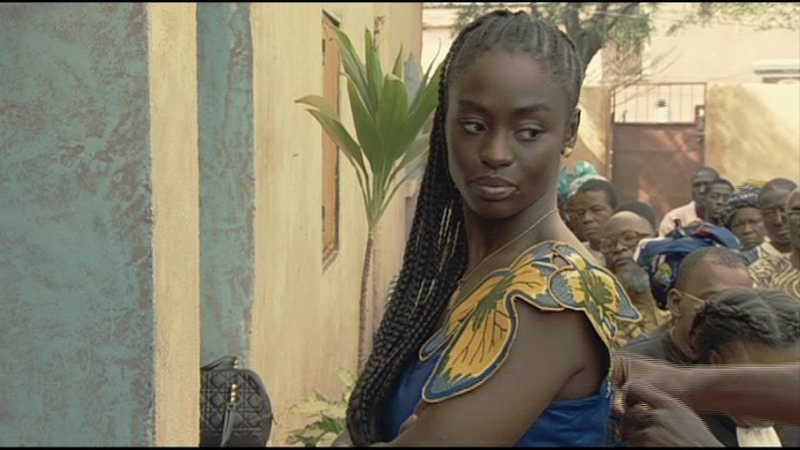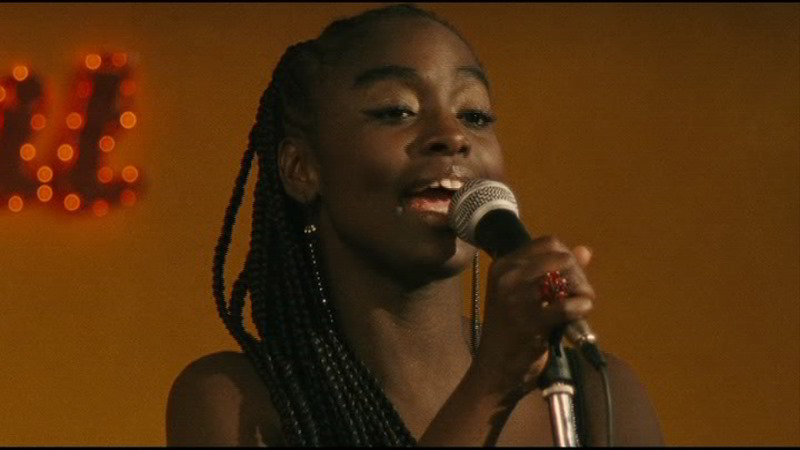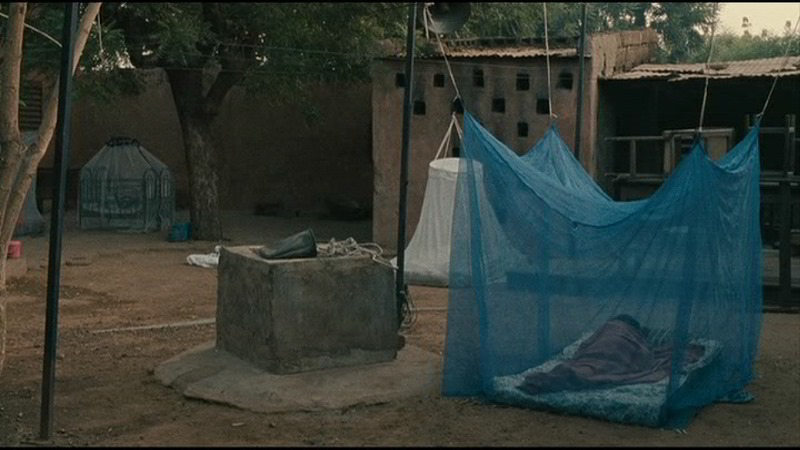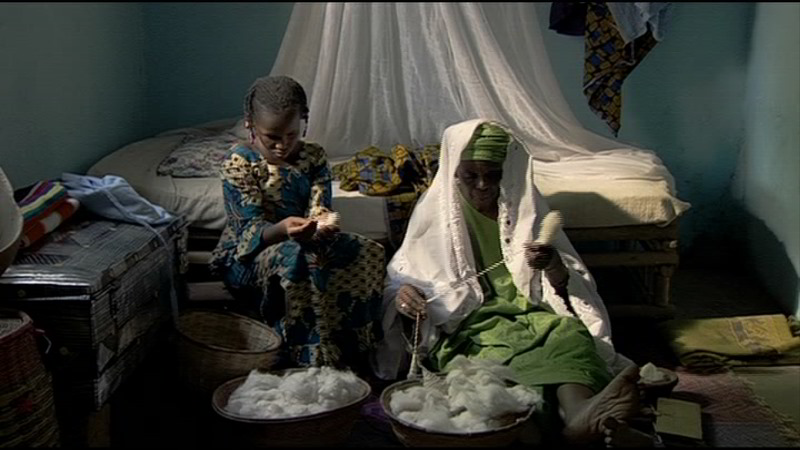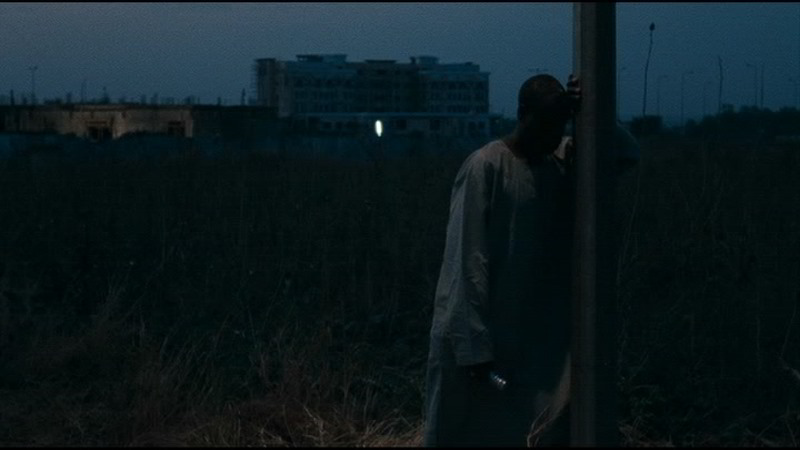![]()
![]()

![]()
![]()
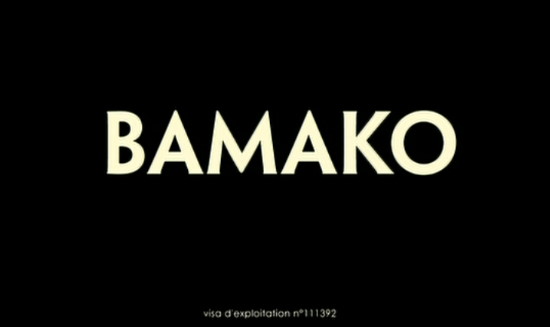
directed by Abderrahmane Sissako
Mali / USA / France 2006
| Before The
Main title of Abderrahmane Sissako's startling new feature
appears, an elderly farmer arrives at a hearing that's being
held in a shared backyard in a poor section of Bamako,
the capital of Mali. He's there to testify, but when he
steps up to the microphone he's told politely to remove his
hat and wait his turn. What's on trial in this backyard court is globalization, particularly the high-interest loans of such organizations as the World Bank and the International Monetary Fund and the pressure they put on governments to cut costs by privatizing or ending social services and firing workers. Unlike the seemingly random everyday details that surround the mock trial -- small talk, the performances of a pop singer in a club, the illness of the singer's daughter, a wedding, clothes being dyed or hung out to dry -- this public reckoning is obviously staged. A year before he began filming, Sissako hired the judge, prosecutors, and defense attorneys, real lawyers who wrote their own dialogue, mainly in French (we're often reminded that Mali is a former colony of France). Sissako hired the witnesses, who also wrote their own speeches, during or shortly before shooting, whenever he happened to find them. "Victims in Africa don't need inventing," he said in a recent interview in Sight & Sound. "Just go out on the street and they're there." One of these witnesses, Aminata Traoré, a writer and formerly the Malian minister of culture, is especially eloquent. "I strongly oppose the idea that Africa's main characteristic is its poverty," she says. "Africa is rather the victim of its wealth. I'd rather speak about pauperization than poverty. . . . Everything today can be bought or sold. A sick woman in a village risks dying because the nurse with the medicine won't treat her if she can't pay. This is what it's come to, what we've learned from the system: pay or die. That's the West's lesson that we inflict on ourselves." Some of Traoré's arguments are cogently countered by Roland Rappaport, a white defense lawyer who quarrels with some of her figures as well as with her implication that the World Bank wants Africans to starve. Excerpt from Jonathan Rosenbaum's review at the Chicago Reader located HERE *** Melé is a bar singer, her husband Chaka is out of work and the couple is on the verge of breaking up…In the courtyard of the house they share with other families, a trial court has been set up. African civil society spokesmen have taken proceedings against the World Bank and the IMF whom they blame for Africa's woes… Amidst the pleas and the testimonies, life goes on in the courtyard. Chaka does not seem to be concerned by Africa's novel desire to fight for its rights… |
Posters
 |
 |
Theatrical Release: France 21 May 2006 (Cannes Film Festival)
Reviews More Reviews DVD Reviews
DVD Comparison:
Artificial Eye - Region 2 - PAL vs. New Yorker - Region 1 - NTSC
Big thanks to Per-Olof Strandberg for the AE Review!
(Artificial Eye - Region 2 - PAL LEFT vs. New Yorker - Region 1 - NTSC RIGHT)
| DVD Box Cover |
|
|
| Distribution |
Artificial Eye Region 2 - PAL |
New Yorker Region 1 - NTSC |
| Runtime | 1:52:08 (4% PAL speedup) | 1:56:44 |
| Video |
1:1.85 Original Aspect Ratio |
1.85:1
Aspect Ratio Average Bitrate: 5.65 mb/s NTSC 720x480 29.97 f/s |
|
NOTE: The Vertical axis represents the bits transferred per second. The Horizontal is the time in minutes. |
||
|
Bitrate
: Artificial Eye |
|
|
|
Bitrate
: New Yorker |
|
|
| Audio | French / Bambara (Dolby Digital 5.1), French / Bambara (Dolby Digital 2.0) | French / Bambara (Dolby Digital 5.1), French / Bambara (Dolby Digital 2.0) |
| Subtitles | English, None | English, None |
| Features |
Release Information: Studio: Artificial Eye Aspect Ratio:
Edition Details: Chapters 16 |
Release Information: Studio: New Yorker Aspect Ratio:
Edition Details:
• Trailer (16:9 / 1:20) • 12-page liner notes booklet • DVD-9 DVD Release Date: April 15th, 2008 Keep-case Chapters 16 |
| Comments: |
ADDITION: New Yorker - NTSC - April 08': Image quality is not extravagantly different on the two dual-layered, anamorphic releases - especially if you are viewing on a CRT. Audio options are the same. Differences include: 1) The NY'er is interlaced (a hurdle, I know, they still strive to overcome). 2) Colors looks a shade brighter and detail minutely sharper on the Artificial Eye (see last large capture for most prominent example). 3) The NY'er have added a few more supplements including two further interviews and some good liner notes (but lose the promotional film and text bio etc.). 4) Subtitle font - I lean towards the Artificial Eye for clarity and ease of readability. 5) Price - at this time it seem the AE has the edge (depending, of course, on shipping etc.) Bottom line is that this is a a very good film that deserves an audience. I credit New Yorker will bringing it to Region 1. I watched it on a tube and it appeared quite strong but depending on your system, region-capability and geographic location you can make your decision based on the criteria above. But you should see this film and I predict you won't be disappointed in its strong narrative approach and deep social messages. It's a masterpiece. **** ON THE ARTIFICIAL EYE: Artificial-Eye brings Abderrahmane Sissako's (Waiting for Happiness) Bamako in a strong transfer. Actually I think this is the best possible transfer to Standard DVD. The picture is razor sharp. Some of the image, basically the Courtyard sequence, do appear to have an overexposed look, but I think this is intended, to sense the atmosphere in the bright sunlight with strong contrasts. According to the end credits the film was shot on Kodak 16 mm film stock. This will undoubtedly be superior to the upcoming Ny'er.
I listened to the DD 5.1 sound and like the image,
it is flawless. The five songs that you here in the film are not
translated to English. This I feel very odd in a Political film.
It makes a dramaturgical gap in the continuity, even though Abderrahmane Sissako explains in the informative interview that
for, ex. the farmers song (Sissako mentions this as a Cry from
the Hearth) doesn't require translation, because the worlds
are in a language that the people in the courtyard don't understand. |
DVD Menus
(Artificial Eye - Region
2 - PAL LEFT vs. New Yorker - Region 1 - NTSC RIGHT)
|
|
|
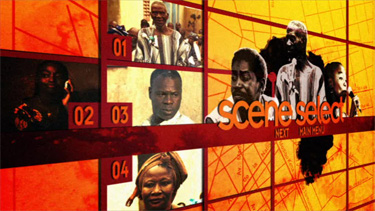 |
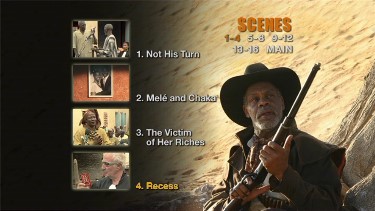 |
 |
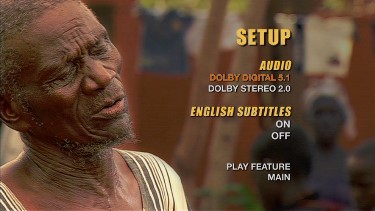 |
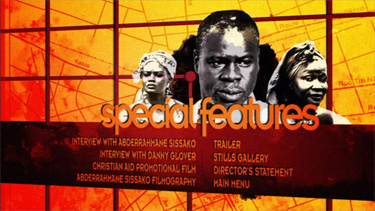 |
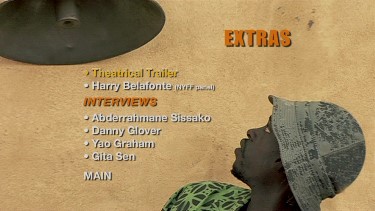 |
 |
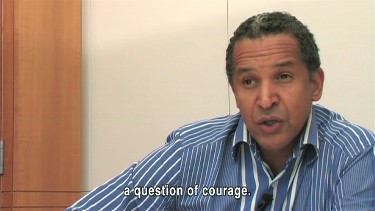 |
|
|
|
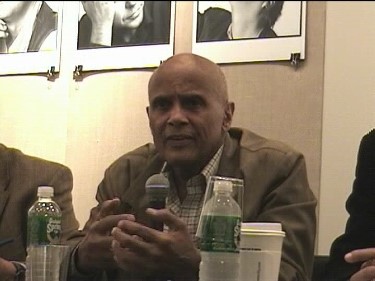 |
|
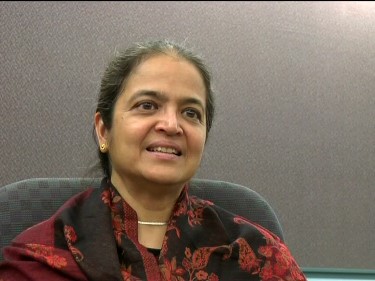 |
Screen Captures
Subtitle sample
(Artificial Eye - Region 2 - PAL TOP vs. New Yorker - Region 1 - NTSC BOTTOM)
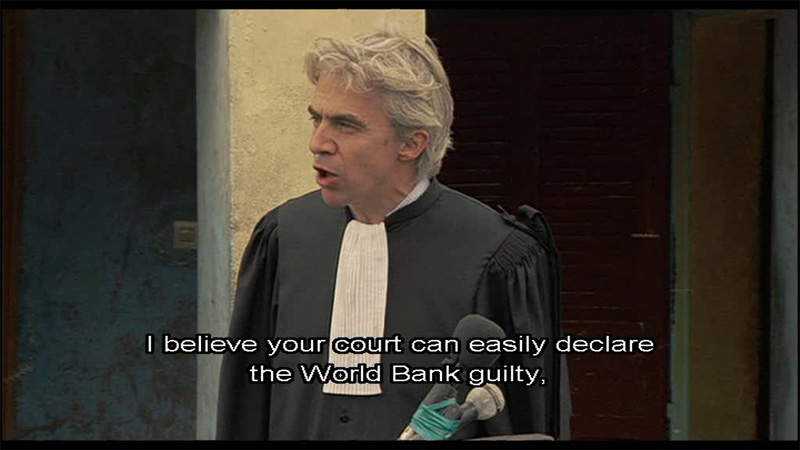 |
|
|
(Artificial Eye - Region 2 - PAL TOP vs. New Yorker - Region 1 - NTSC BOTTOM)
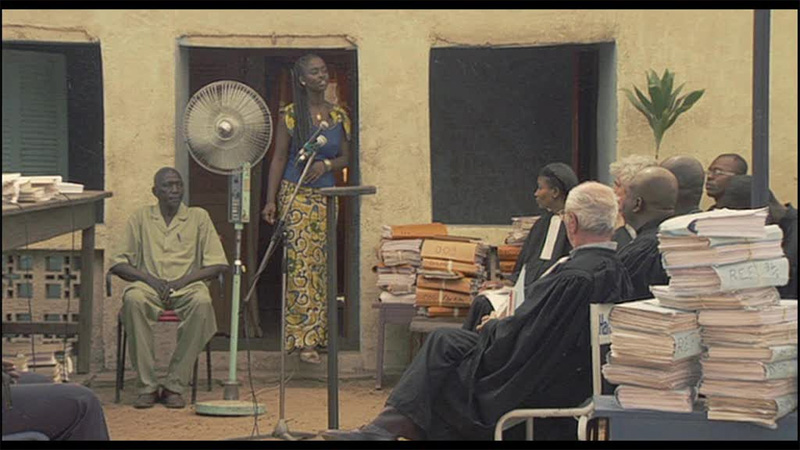 |
|
|
(Artificial Eye - Region 2 - PAL TOP vs. New Yorker - Region 1 - NTSC BOTTOM)
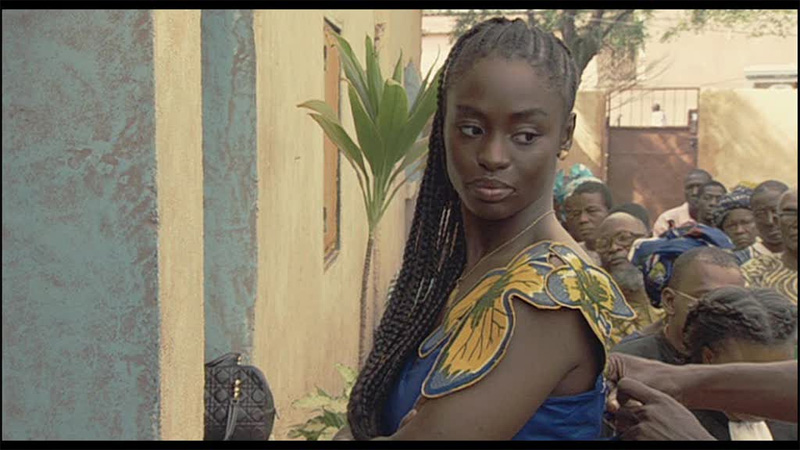 |
|
|
(Artificial Eye - Region 2 - PAL TOP vs. New Yorker - Region 1 - NTSC BOTTOM)
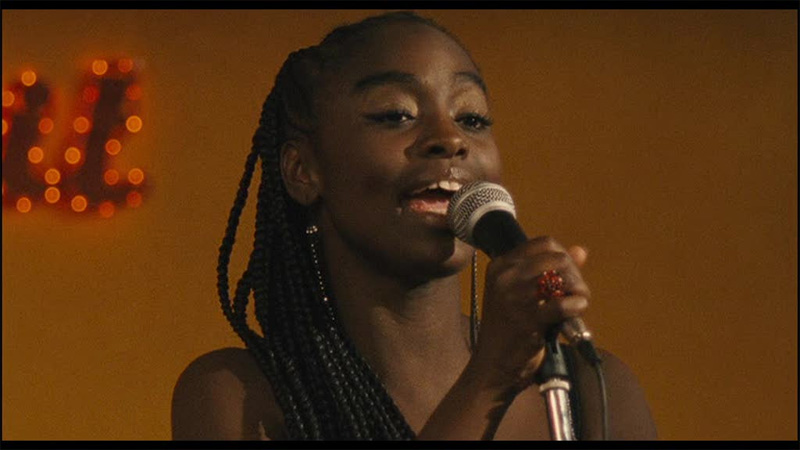 |
|
|
(Artificial Eye - Region 2 - PAL TOP vs. New Yorker - Region 1 - NTSC BOTTOM)
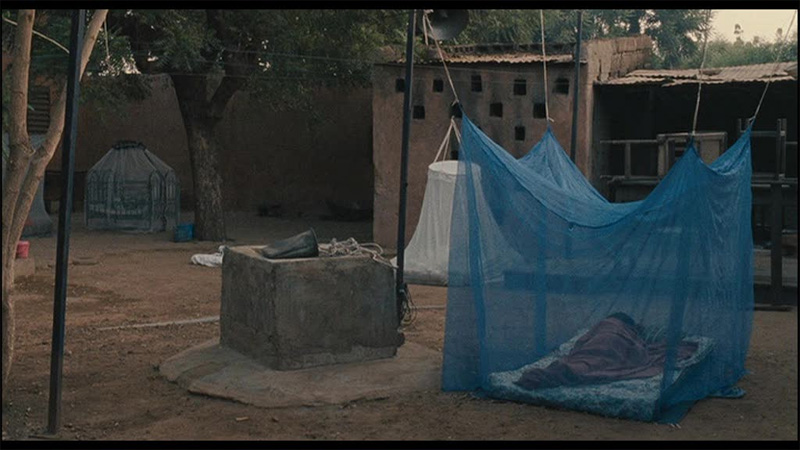 |
|
|
(Artificial Eye - Region 2 - PAL TOP vs. New Yorker - Region 1 - NTSC BOTTOM)
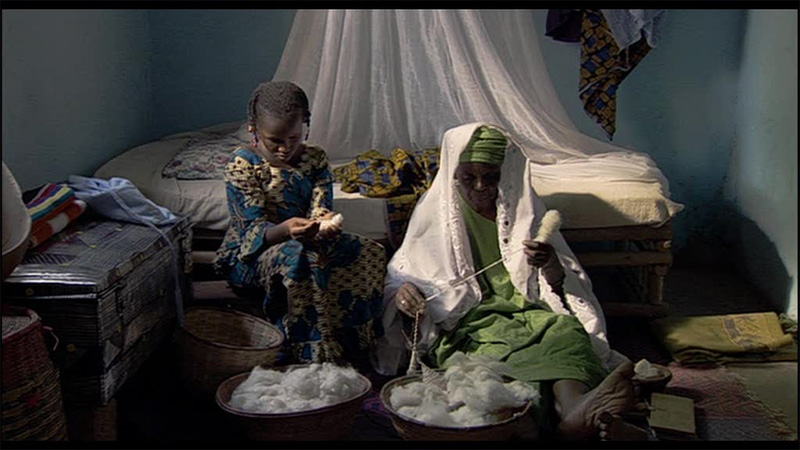 |
|
|
(Artificial Eye - Region 2 - PAL TOP vs. New Yorker - Region 1 - NTSC BOTTOM)
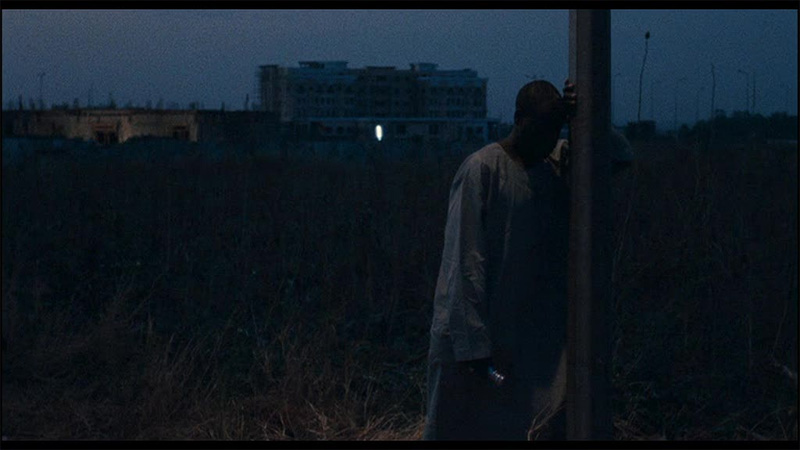 |
|
|
Report Card:
|
Image: |
AE |
|
Sound: |
Draw |
| Extras: | NY'er |
| Menu: | - |
| DVD Box Cover |
|
|
| Distribution |
Artificial Eye Region 2 - PAL |
New Yorker Region 1 - NTSC |
![]()
![]()
![]()
![]()

